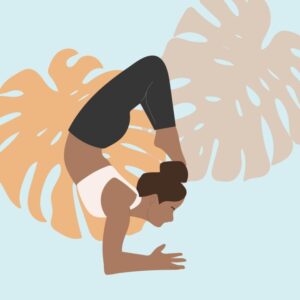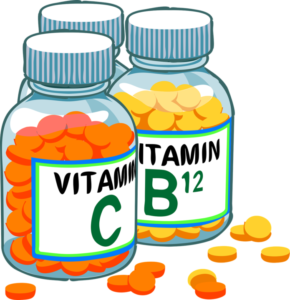Call Anytime +91-9212799477
Health & Wellness: Myths, Facts & the Optimal Way Forward

Health and wellness today are surrounded by countless myths, half truths, and marketing noise. Everyone seems to have an opinion, yet what really matters is finding what is optimal for you.
Science evolves. Meta analyses shift. Guidelines get updated. So instead of looking for what’s “right” or “wrong,” the smarter approach is to focus on what is optimal for the time being.
What is Health?
In my 10 years as a trainer, the simplest definition I’ve found for health is this:
“Being not ill, and keeping all aspects of the body in equilibrium.”
But here’s the catch this equilibrium is not the same for everyone. No two bodies are alike. That’s why fixed numbers don’t always make sense; instead, we look at ranges that allow individuals to find their personal balance.
What is Wellness?
Health mainly relates to the body and mind, but wellness takes things a step further Wellness is multidimensional. It covers:
- Physical health
- Mental clarity
- Social connections
- Emotional balance
- Daily behaviours and habits
Health keeps you alive, wellness helps you thrive.
Myths vs Facts in Health & Wellness

Myth 1: Fitness = Health
Many people chase fitness, not health. They want a six-pack or a sculpted body.
Fact: Fitness is simply the ability to perform daily activities efficiently and without pain. Health is broader it’s about balance, resilience, and longevity.
Myth 2: Supplements Are the Secret

The supplement industry is massive, and marketing often makes it look like pills and powders are shortcuts to success.
Fact: Macronutrients (carbs, proteins, fats) and micronutrients (vitamins, minerals) are important, but no supplement replaces a balanced diet. Some are evidence based and useful when you’re deficient. Choose wisely, not blindly.
Myth 3: One Training Method Works for Everyone
People often become loyal to one approach
be it yoga, CrossFit, running, or bodybuilding.
Fact: Every method has its pros and cons. No single approach is best for all. The right formula is a blend of activities that suit your body, lifestyle, and goals.
What Does “Optimal” Really Mean?
Instead of chasing perfection, aim for optimal ranges that are sustainable. Leading organizations such as ACSM, NASM, ACE, and Skill India provide evidence-based guidelines:
Category Optimal Range Source:
- Physical Activity 150–300 min/week
- moderate OR 75–150 min vigorous ACSM / WHO
- Strength Training 2–3 sessions/week (all major muscle groups) ACSM
- Protein Intake 1.2–2.0 g/kg bodyweight/day (goal-dependent; up to 2.2 g/kg for athletes) NASM / ISSN
- Sleep 7–9 hours per night NSF
- Hydration ~35–40 ml/kg bodyweight/day (climate & activity based) ACSM
These aren’t rigid rules but flexible ranges a starting point to personalize your plan.
Food is Medicine: The Role of Nutrition

There’s no point being a gym slave and spending hours training unless you also manage your intake. Nutrition is the foundation training is only the spark.
Crash diets and trends zero carb, keto, water fasting, detox teas often confuse people more than they help. What truly matters is understanding the basic needs of your body and aligning your food choices with your goals.
Golden Rule: Eat within your calories, prioritize whole foods, and balance macronutrients.
According to ACSM, NASM, and ISSN guidelines, here’s the evidence based breakdown of daily macronutrient needs.
Macronutrient Recommended Intake Purpose Source
- Protein 1.2 – 2.0 g/kg bodyweight/day (up to 2.2 g/kg in athletes) Muscle repair, growth, recovery ACSM, ISSN
- Carbohydrates 3 – 5 g/kg/day (light/moderate activity) 5 – 7 g/kg/day (moderate–high activity) 7 – 10 g/kg/day (endurance/heavy training) Primary energy source ACSM, NASM
- Fats 20 – 35% of total daily calories (~0.8 – 1.0 g/kg/day) Hormonal health, cell function, satiety ACSM, NASM
Practical Example (70 kg active individual)
- Protein: 1.6 g/kg → ~110 g/day
- Carbohydrates: 4 g/kg → ~280 g/day
- Fats: ~25% of 2200 kcal → ~60 g/day
These numbers are not rigid rules, but flexible ranges to personalize based on your lifestyle and goals. Whether your aim is fat loss, strength, or endurance, the principle remains the same fuel the body, don’t starve it.
The Weight Obsession Trap

One of the biggest challenges people face today is overstressing the number on the scale.
- Overweight, BMI, and body composition metrics often push people to extremes.
- Rapid weight loss without strength training usually leads to muscle loss, which is harmful in the long run.
- Chasing the scale often brings lifestyle diseases instead of health.
- Instead of obsessing over weight, focus on strength, energy, and muscle preservation.
Fat loss is healthy only when it’s gradual and supported by proper nutrition and training.
A Broader Perspective: The Real Markers of Wellness
Wellness isn’t just about looking fit. A strong body without balance in other aspects is incomplete.

We should aim to improve:
- Strength
- Endurance
- Flexibility
- Power
- Speed & Agility
- Mental equilibrium
- Social harmony
This holistic view is also reflected in Ashtanga Yoga, where body, mind, and spirit align for sustainable health.
Final Thoughts
- Health and wellness are not about quick fixes. They are about balance, sustainability, and adaptability.
- Being active is the key. Eating clean is the mantra. Wellness is a lifelong journey not a 30-day transformation challenge.
- Let’s focus not just on looking fit, but on building a lifestyle where we can be fit, fab, and thriving.
- Health = equilibrium; Wellness = multidimensional thriving.
- Myths mislead facts are evidence based and personal.
- Optimal ranges matter more than rigid rules.
- Nutrition is about balance, not crash diets.
- Focus on strength, energy, and sustainability,not just the number on the scale.
References
- American College of Sports Medicine (ACSM) Position Stand: Nutrition and Athletic Performance (2016).
- National Academy of Sports Medicine (NASM) Essentials of Personal Fitness Training, 7th Edition.
- International Society of Sports Nutrition (ISSN) Position Stand: Protein and Exercise (2017).
- World Health Organization (WHO) Physical Activity Guidelines (2020).
- National Sleep Foundation (NSF) Sleep Duration Recommendations.
-By Stebin M.A,
Senior Personal Trainer,
Rejuvenation Fitness Group, Delhi
Privacy Policy | Terms & Conditions | Refund Policy
© Copyright 2024 by PEFINDIA.org | Designed & Developed By CraftyWebbies
